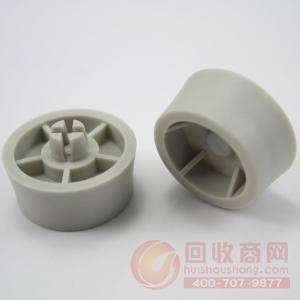This is a frequently encountered problem, but it is easier to solve. When it can't be solved by the process, it can be improved from the design and manufacture of the mold, which can generally be solved. Equipment: (1) The plasticizing capacity of the injection molding machine is small. When the quality of the product exceeds the actual maximum injection quality of the injection molding machine, it is apparent that the supply amount is insufficient. If the quality of the product is close to the actual injection quality of the injection molding machine, there is a problem that the plasticization is insufficient, and the heating time in the barrel is insufficient, and as a result, the proper melting material cannot be provided to the mold in time. In this case, it is only necessary to replace the injection molding machine with a large capacity to solve the problem. Some plastics such as nylon (especially nylon 66) have a narrow melting range and a large specific heat, and an injection molding machine with a large plasticizing capacity is required to ensure the supply of the material. (2) The temperature displayed by the thermometer is not true, and the height is low, causing the material temperature to be too low. This is due to the failure of the temperature control device such as the thermocouple and its line or the temperature difference millivoltmeter, or the aging or burning of the electric heating ring away from the temperature measurement point, and the heating failure has not been found or repaired and replaced in time. (3) The diameter of the nozzle inner hole is too large or too small. Too small, because the flow diameter is small, the specific volume of the strip is increased, it is easy to be cold, the feed channel is blocked or the injection pressure is consumed; if it is too large, the flow cross-sectional area is large, and the pressure per unit area of ​​the plastic mold is low, forming a shot. The situation is small. At the same time, non-Newtonian plastics such as aBS are not able to obtain a large shear heat and cannot cause a decrease in viscosity to cause filling difficulties. The nozzle is not well matched with the main entrance, and the mold overflow is often caused, and the mold is not filled. The nozzle itself has a large flow resistance or is blocked by foreign matter, plastic carbonized deposits, etc.; the spherical surface of the nozzle or the main entrance is damaged and deformed, which affects the good cooperation with the other side; the mechanical failure or deviation of the injection seat causes the nozzle and the main shaft axis to tilt. Displacement or axial compression surface disengagement; nozzle ball diameter is larger than the entrance ball diameter of the main channel, due to the gap at the edge, gradually increasing the axial pushing force of the nozzle under the overburden of the overflow will cause the product to be not filled. (4) The plastic frit blocks the feeding channel. Due to the local melting of agglomerates in the hopper dryer, or the temperature of the barrel feed section is too high, or the plastic grade is not properly selected, or the plastic contains too much lubricant, the plastic will enter the feed port to reduce the diameter or screw. The deep groove in the screw end is melted prematurely, and the pellet and the melt are bonded to each other to form a “cross bridgeâ€, which blocks the passage or encloses the screw, and slides along with the screw for circumferential sliding, which cannot be moved forward, causing interruption or irregular fluctuation of the supply. . This situation can only be solved after the channel is cut through and the block is removed. (5) The nozzle cold material is fed into the mold. Injection molding machines usually only have straight-through nozzles for their pressure loss. However, if the front end of the barrel and the temperature of the nozzle are too high, or if the front end of the barrel is stored too much under high pressure, a "flowing" occurs, so that the plastic accidentally preemptively enters the main entrance when the injection is not started and the mold is opened. It hardens under the cooling of the stencil and prevents the melt from smoothly entering the cavity. At this time, the temperature of the front end of the barrel and the nozzle should be reduced and the amount of material stored in the barrel should be reduced. The back pressure should be reduced to avoid excessive density of the melt at the front end of the barrel. (6) The injection molding cycle is too short. Due to the short cycle, the material temperature can not keep up with the lack of material, especially when the voltage fluctuation is large. The period should be adjusted according to the supply voltage. During the adjustment, the injection and holding time are generally not considered. The main consideration is to adjust the period from the completion of the pressure holding to the return of the screw, which does not affect the filling molding conditions, and can prolong or shorten the preheating time of the pellet in the barrel. Luminous Film,Photoluminescent Demo,Photoluminescent Rigid Sheet,Glow In The Dark Rigid Sheet JINAN REALGLOW CO.,LTD , https://www.realglowsign.com